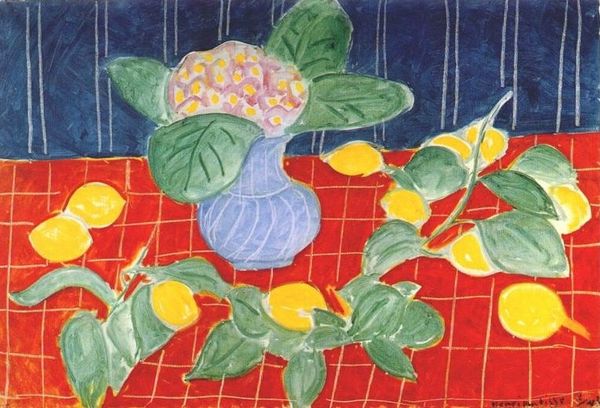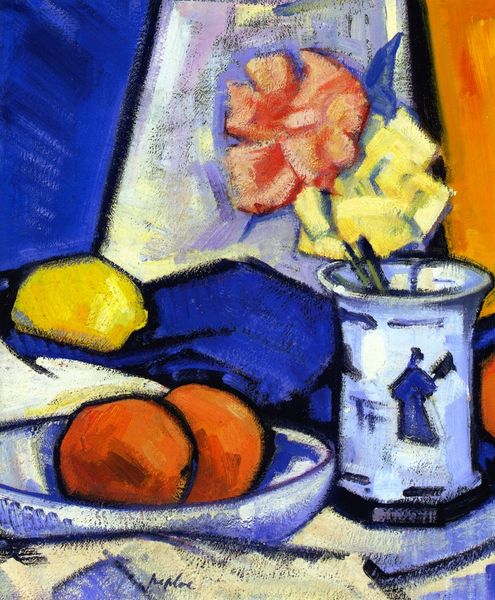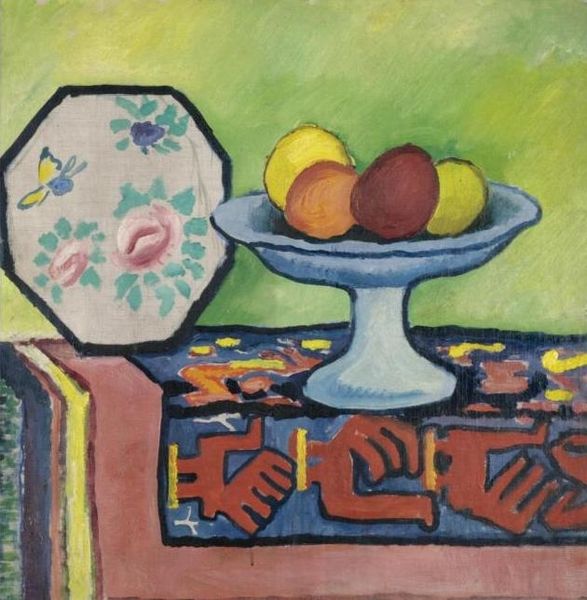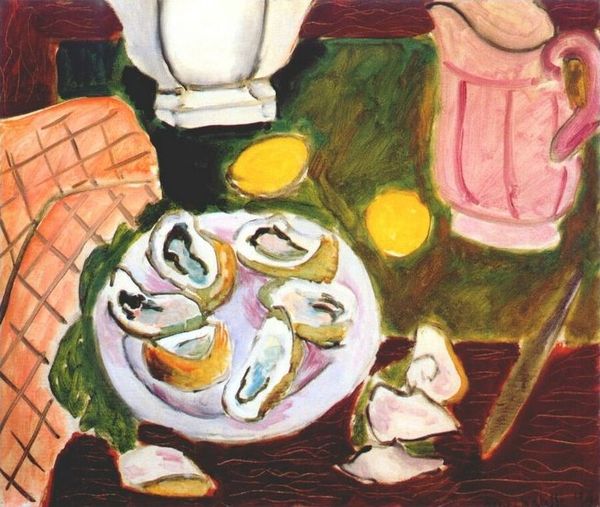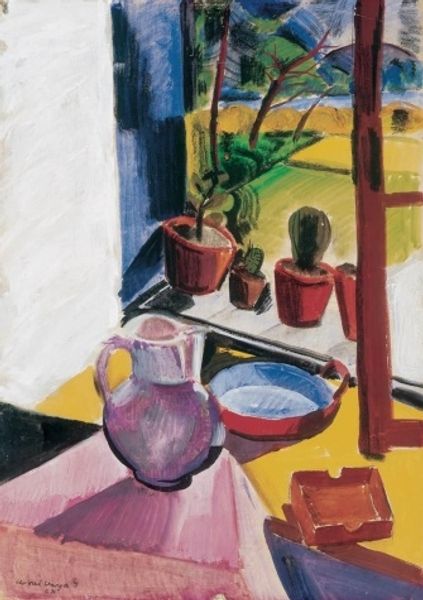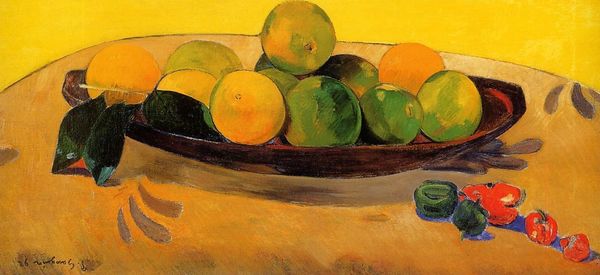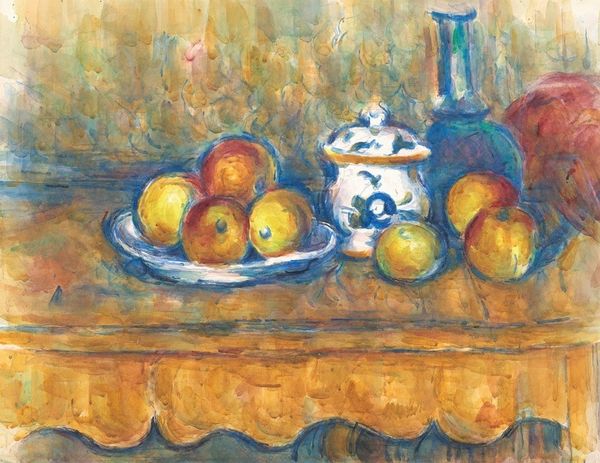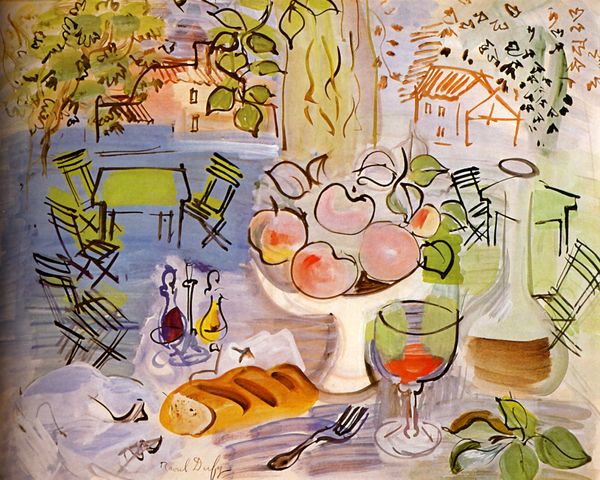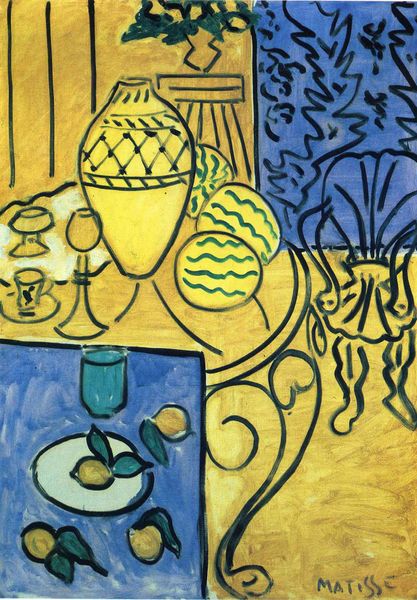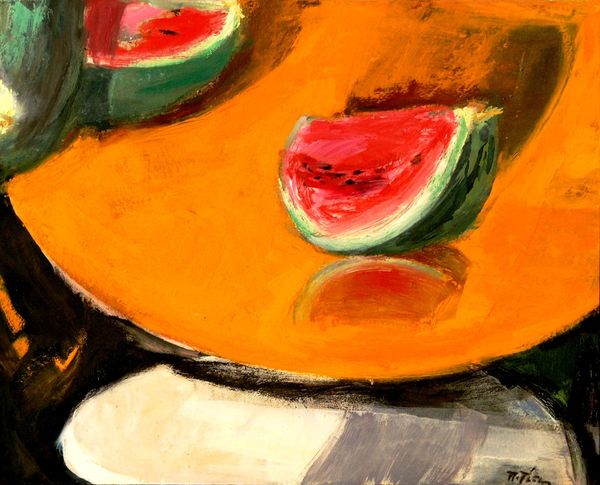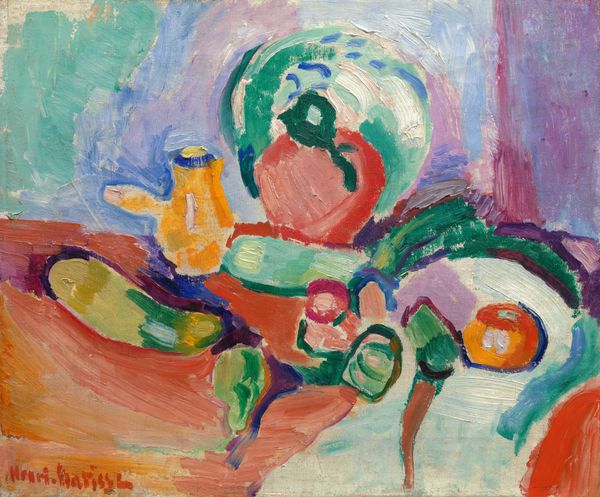
Copyright: Henri Matisse,Fair Use
Editor: Henri Matisse's "Black Philodendron and Lemons," created in 1943 using oil paint, strikes me as a really interesting exercise in contrasting shapes. The geometric lemons scattered across that vibrant red tabletop are juxtaposed so vividly against the organic shapes of the black plant. What do you see in this piece? Curator: For me, the painting is less about geometric forms and more about a particular visual language Matisse developed, one that emphasizes emotion through simplified, potent images. Look at the black philodendron itself. Doesn't it remind you of Matisse's later cut-outs? That almost primal shape, repeated against the background, almost operates as an ideogram. Editor: An ideogram? Like a written character meant to convey an idea? Curator: Precisely. Matisse is using shape and color to transmit something deeper than just what is depicted, especially within the context of the Second World War when this work was created. Notice that sharp contrast and heightened emotional state, even the jarring colours of the tabletop can evoke the anxiety of that historical moment. It can serve as a shared, visual memory of disruption, fear, but also resilience. What about the lemons and leaves; are those a type of code as well? Editor: You’ve given me a lot to think about! I hadn’t considered the emotional weight of those forms and colours at all. I was mainly responding to the arrangement, but now, I see the repetition of elements creates an emotionally charged scene. Curator: Exactly! It’s how these basic elements become charged with feeling through Matisse’s unique visual syntax. The objects in the work remind us to consider symbols beyond personal meanings. Editor: Well, this was great; I definitely will examine all paintings more in-depth. Thank you so much.
Comments
No comments
Be the first to comment and join the conversation on the ultimate creative platform.
